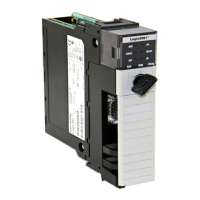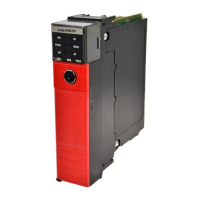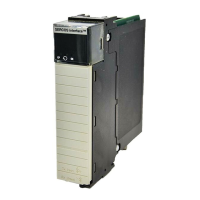112 Rockwell Automation Publication 1756-UM001M-EN-P - February 2012
Chapter 6 Serial Communication (1756-L6x controllers only)
Like DF1 full-duplex protocol, the DF1 radio modem allows any node to initiate
to any other node at any time (that is, if the radio modem network supports full-
duplex data-port buffering and radio-transmission collision avoidance). Like
DF1 half-duplex protocol, a node ignores any packets received that have a
destination address other than its own, with the exception of broadcast packets
and passthru packets.
Unlike either DF1 full-duplex or DF1 half-duplex protocols, the DF1 radio
modem protocol does not include ACKs, NAKs, ENQs, or poll packets. Data
integrity is ensured by the CRC checksum.
DF1 Radio Modem Advantages
The primary advantage of using the DF1 radio modem protocol for radio modem
networks is in transmission efficiency. Each read/write transaction (command
and reply) requires only one transmission by the initiator (to send the command)
and one transmission by the responder (to return the reply). This minimizes the
number of times the radios need to key-up to transmit, which maximizes radio
life and minimizes radio power consumption.
In contrast, DF1 half-duplex protocol requires five transmissions for the DF1
master to complete a read/write transaction with a DF1 slave—three by the
master and two by the slave.
The DF1 radio modem driver can be used in a pseudo master/slave mode with
any radio modems, as long as the designated master node is the only node
initiating MSG instructions, and as long as only one MSG instruction is triggered
at a time.
For modern serial radio modems that support full-duplex data port buffering and
radio transmission collision avoidance, the DF1 radio modem driver can be used
to set up a masterless peer-to-peer radio network, where any node can initiate
communication to any other node at any time, as long as all of the nodes are
within radio range so that they receive each other’s transmissions.

